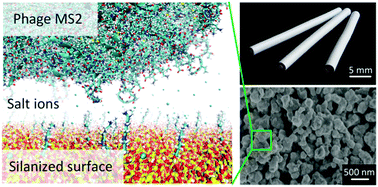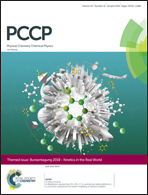Effect of divalent versus monovalent cations on the MS2 retention capacity of amino-functionalized ceramic filters
Abstract
Ceramic capillary membranes conditioned for virus filtration via functionalization with n-(3-trimethoxysilylpropyl)diethylenetriamine (TPDA) are analyzed with respect to their virus retention capacity when using feed solutions based on monovalent and divalent salts (NaCl, MgCl2). The log reduction value (LRV) by operating in dead-end mode using the model bacteriophage MS2 with a diameter of 25 nm and an IEP of 3.9 is as high as 9.6 when using feeds containing MgCl2. In contrast, a lesser LRV of 6.4 is observed for feed solutions based on NaCl. The TPDA functionalized surface is simulated at the atomistic scale using explicit-solvent molecular dynamics in the presence of either Na+ or Mg2+ ions. Computational prediction of the binding free energy reveals that the Mg2+ ions remain preferentially adsorbed at the surface, whereas Na+ ions form a weakly bound dissolved ionic layer. The charge shielding between surface and amino groups by the adsorbed Mg2+ ions leads to an upright orientation of the TPDA molecules as opposed to a more tilted orientation in the presence of Na+ ions. The resulting better accessibility of the TPDA molecules is very likely responsible for the enhanced virus retention capacity using a feed solution with Mg2+ ions.



 Please wait while we load your content...
Please wait while we load your content...